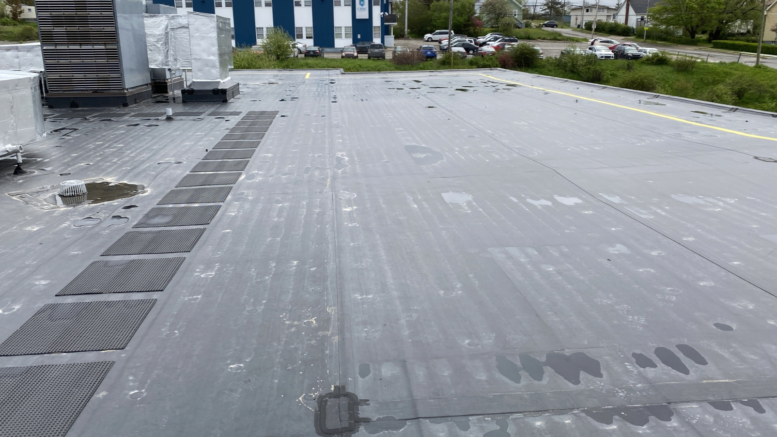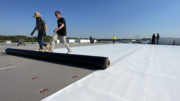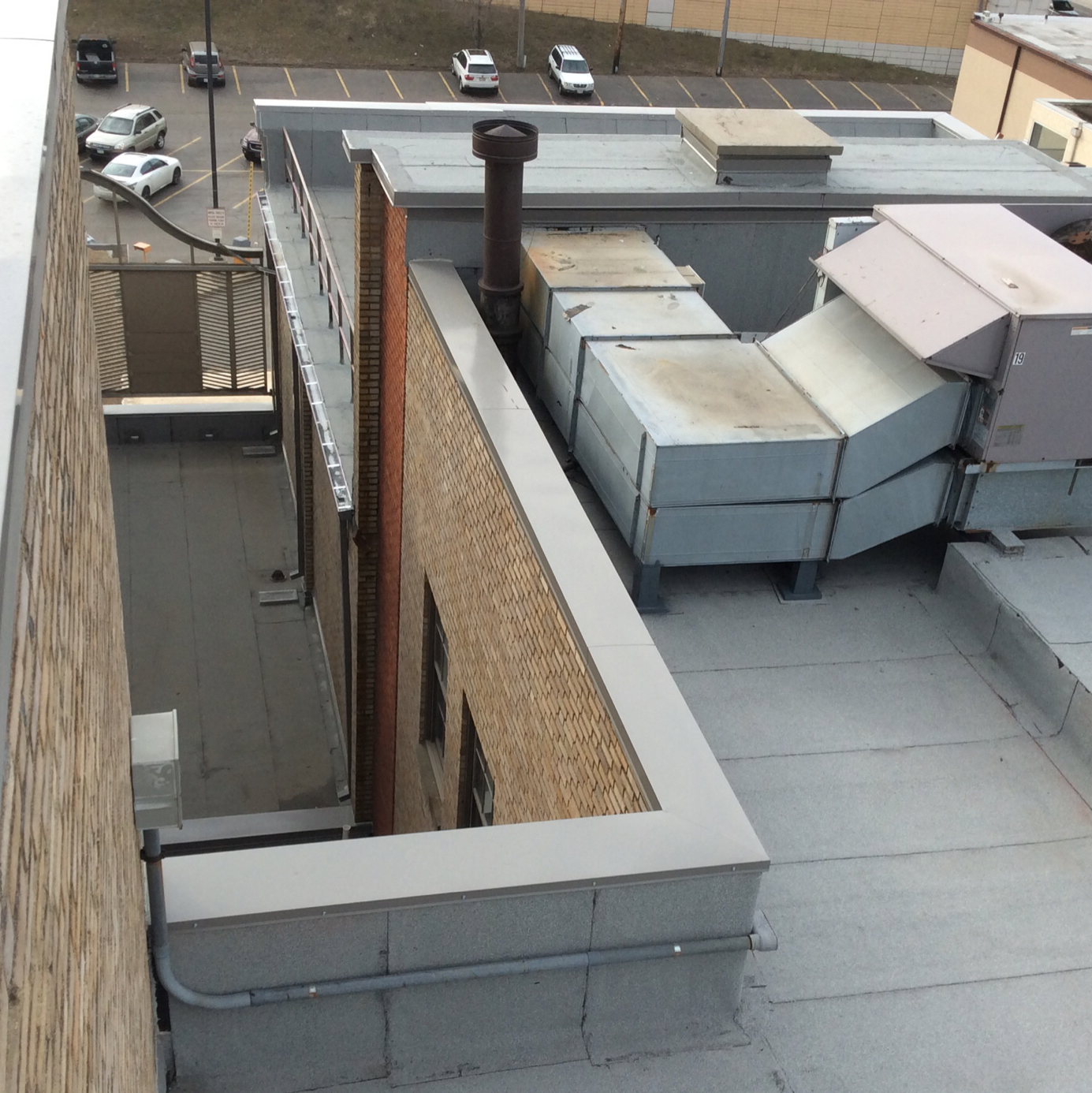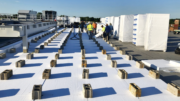The late summer and early fall months on North America’s Eastern Seaboard can be a spectacularly beautiful time of year marked by beautiful foliage, warm days, and cool nights. Unless of course, an Atlantic hurricane rolls in for a visit.
Which is exactly what happened in 2022 when the season’s first major hurricane hit the Canadian province of Nova Scotia. Hurricane Fiona made history as the costliest and most intense tropical or post-tropical cyclone to ever strike Canada and was classified as a Category 4 hurricane.
With winds up to 140 mph, Fiona left a path of destruction in her wake, causing nearly $700 million in insurance damage across Nova Scotia, Prince Edward Island, New Brunswick, Newfoundland and Labrador, and Quebec.
The Middle School
The Whitney Pier Memorial Middle School is in Sydney, Nova Scotia, on Cape Breton Island. The public school has approximately 300 students in grades six through eight. The school is located only a few kilometers from the North Atlantic near the Gulf of St. Lawrence, and it was right in Fiona’s path. Fiona would be the second major storm to hit the school in three years.
Before the first storm struck, experts concluded the school’s 46,400-square-foot inverted roofing membrane assembly (IRMA) — which included 20-25 pounds per square foot of stone ballast, 3 inches of XPS insulation, and the waterproofing membrane — had reached the end of its service life and needed to be replaced. The tear-off and re-roofing for the first two sections of the project were scheduled to be completed during the summer of 2020, with the remaining six sections of roof replacement planned for the second phase of the project the following year.
Founded in 1986, Trifos Design Consultants of Sydney, Nova Scotia, is a full service architectural and interior-design firm offering a broad range of services, including complete architectural and interior design, working drawings and specifications, restoration and heritage design, site selection, master planning, and construction-administration services. The company was selected for the Whitney Pier School renovation work and specified a fully adhered EPDM roofing system for the project.
“We’ve had great success with fully adhered rubber roofing systems,” says Spyro Trifos, principal architect of Trifos Design Consultants. “With local high winds we’ve seen lots of spalling on ballasted roofs, and billowing on mechanically attached roofs, so we really like to use fully adhered systems when appropriate. Given the complexity of the roof and the various sections, we felt that this was the best option.”
John Harrington, operations manager of PMC Roofing, had another idea for the school’s new roofing system. PMC Roofing Ltd., of Debert, Nova Scotia, specializes in low-slope roofing applications and was selected for the first phase of the project, which included two sections of the roof totaling 13,800 square feet. The first section was a 5,000-square-foot area with a steel deck, and the remaining 8,800 square feet of roof spanned the school’s gymnasium and had a wood deck.
“Whitney Pier Middle School is located only about two kilometers (1.2 miles) from the coast, so wind uplift is a big concern,” says Harrington. “In addition, since classes were going to be in session when we were scheduled to do the work, we were very concerned about the students and potential issues with odors during the installation. So, we suggested an alternative approach.”
In past work, PMC Roofing had used Carlisle SynTec Systems’ RapidLock system and really liked it — not only for its strength and wind performance, but also because it is VOC- and odor-free, which was a major concern for this project.
RapidLock is a revolutionary commercial roofing membrane attachment method that provides the strength of a fully adhered system without the use of adhesives. The system combines a special 115-mil Carlisle FleeceBACK EPDM RapidLock (RL) membrane with VELCRO Brand Securable Solutions’ hook-and-loop technology, incorporated into a special polyisocyanurate insulation facer. The system can achieve excellent wind uplift ratings (up to FM 1-225) comparable to a fully adhered roofing system, while providing incredible application flexibility with no odors or temperature restrictions.
Neither Trifos Design nor the local school board were familiar with the system, so Harrington requested a meeting and brought in a piece of Carlisle’s SecurShield RapidLock (RL) Polyiso along with some FleeceBACK RL EPDM membrane. Harrington demonstrated the simplicity and toughness of the system, while explaining how it would be beneficial for the Whitney Pier School project — not only for its uplift strength, but mostly because the system does not require any adhesives.
“We were all intrigued by the RapidLock system and the advantages that it offers,” Trifos notes. “There are no adhesives so there is nothing to flash off, which can be a time saver. There are no odors, which reduces concerns about installing it on an occupied school building. Plus, the PMC team had been fully trained by Carlisle to install the system.”
New Roof Installation
The school board and architect accepted the system as an alternative, and within two weeks of starting the project in mid-August of 2020, PMC Roofing had the first 5,000-square-foot section of roof completed.
After tearing off the old IRMA system down to the steel deck, PMC’s crew of six to eight workers mechanically attached a half-inch gypsum board as a thermal barrier. Next, they installed Carlisle’s VapAir Seal 725TR Air and Vapor Barrier, a self-adhering rubberized asphalt membrane laminated to a polypropylene film. In areas where improved drainage was needed, they installed 2 inches of tapered Polyiso insulation followed by 2 inches of Carlisle SecurShield Polyiso, and 2 inches of SecurShield RL Polyiso. The last step was to install the FleeceBACK RL EPDM membrane with 3-inch-wide factory-applied seam tape.
For this step, the PMC installation crew rolled out the membrane and carefully positioned it on the roof before securing it in place. The back side of the membrane has a release liner that prevents the fleece from “grabbing” the hooks before it is properly placed. The release liner is slit down the middle of the sheet, allowing the applicators to position the membrane prior to securing it with the integrated hook-and-loop technology on the insulation facer.
“We really like this system,” Harrington says. “We’ve used it for several projects, and it is really a nice roofing system that has all the advantages of a fully adhered system, but without the chemicals.”
Next was the 8,800-square-foot roof section over the gymnasium, which had a wood deck.
“We were able to get that portion of the roof stripped off pretty quickly,” Harrington says. “And we were moving right along with the installation, with the same system and assembly. We had just about half of the new roof on the gym, when the first storm hit.”
An Initial Test of Strength
While not as severe as Hurricane Fiona would be two years later, Hurricane Teddy was barreling down on the Canadian Maritimes. Fortunately, the storm weakened from a Category 1 hurricane to a gale-force storm before making landfall in Nova Scotia with sustained winds of 65 mph. The storm hit Nova Scotia and then traveled in a northeasterly direction over Cape Breton Island and Whitney Pier Middle School.
Thankfully for PMC and the Whitney Pier School, Teddy had not done any damage to the school or to the roofing system then in progress. “It was at that point that I think the school board and everyone concerned felt really good about the decision to go with RapidLock,” says Harrington.
When the next phase of the roofing project was awarded in 2022, a year later than planned due to supply chain issues, the roof was again specified as a fully adhered EPDM system, but this time Trifos Design had included RapidLock as an option. PMC again won the bid with the system and began work on the next roof section in July.
“The Carlisle RapidLock system has really great sustainability benefits,” notes Harrington. “There are no environmental or temperature concerns. Local humidity can change here rapidly, which can affect exposed adhesives with different flash-off times if the air temperatures are not favorable. But that’s not a concern with this system and there’s also less overall disposal for the project as well.”
Phase two of the project included the remaining six sections of the roof, which ranged from 500 to over 14,000 square feet in size. All these sections were over a steel deck with the same ballasted and inverted system that needed to be removed.
PMC used the same roofing assembly — including tapered insulation for drainage — on each of these sections, which were divided by curbs on the roof. Each curb also included new edge metal.
While most of the remaining roof sections were fairly wide open, two sections had large mechanical air-handling equipment and ductwork that needed to be carefully flashed by the PMC team. For these sections, PMC also installed crickets for improved drainage, which consisted of an additional layer of 2-inch tapered Polyiso installed directly over the vapor barrier. The final step was installing walkway pads on four of the sections, as well as a 6-inch-wide yellow warning strip located 6 feet from the roof edge around the perimeter of each section.
The Moment of Truth
The project was completed in September of 2022, just days before Hurricane Fiona arrived.
Fiona hit Whitehead, Nova Scotia, south of Sydney on the morning of September 24, 2022, with sustained winds of about 105 mph and gusts of up to 111 mph. The high winds and destructive storm surge resulted in insured losses in Canada estimated at over $500 million (USD), with the total losses being much greater.
Upon post-storm inspection, the Whitney Pier Memorial School and its new roofing system had survived the hurricane undamaged. This was not surprising since the RapidLock system is Factory Mutual approved with a 1-90 rating and can withstand pressures of up to 225 pounds per square foot in the corners, and wind gusts of up to 120 mph.
“We were very pleased with the roof’s performance, through two significant storms,” says Harrington. “In fact, another school just 30 km (18 miles) away lost its gym roof in Fiona, and that roof was replaced with the same hook-and-loop system shortly afterwards.”
“RapidLock is a great system for us,” Harrington says. “While it offers productivity advantages, we see it as simply a better-quality roof, with better performance, and we always look for quality systems that last. Plus, we’re very excited to have such a great-performing product for our specific geography here in Nova Scotia.”
TEAM
Architect: Trifos Design Consultants of Sydney, Nova Scotia, trifos.com
Roofing Contractor: PMC Roofing Ltd., of Debert, Nova Scotia
MATERIALS
Membrane: 115-mil FleeceBACK EPDM RapidLock, Carlisle SynTec Systems, carlislesyntec.com
Air and Vapor Barrier: VapAir Seal 725TR, Carlisle SynTec Systems
Insulation: SecurShield Polyiso and SecurShield RL Polyiso, Carlisle SynTec Systems






Be the first to comment on "Nova Scotia Middle School’s Roof Withstands Two Major Storms"